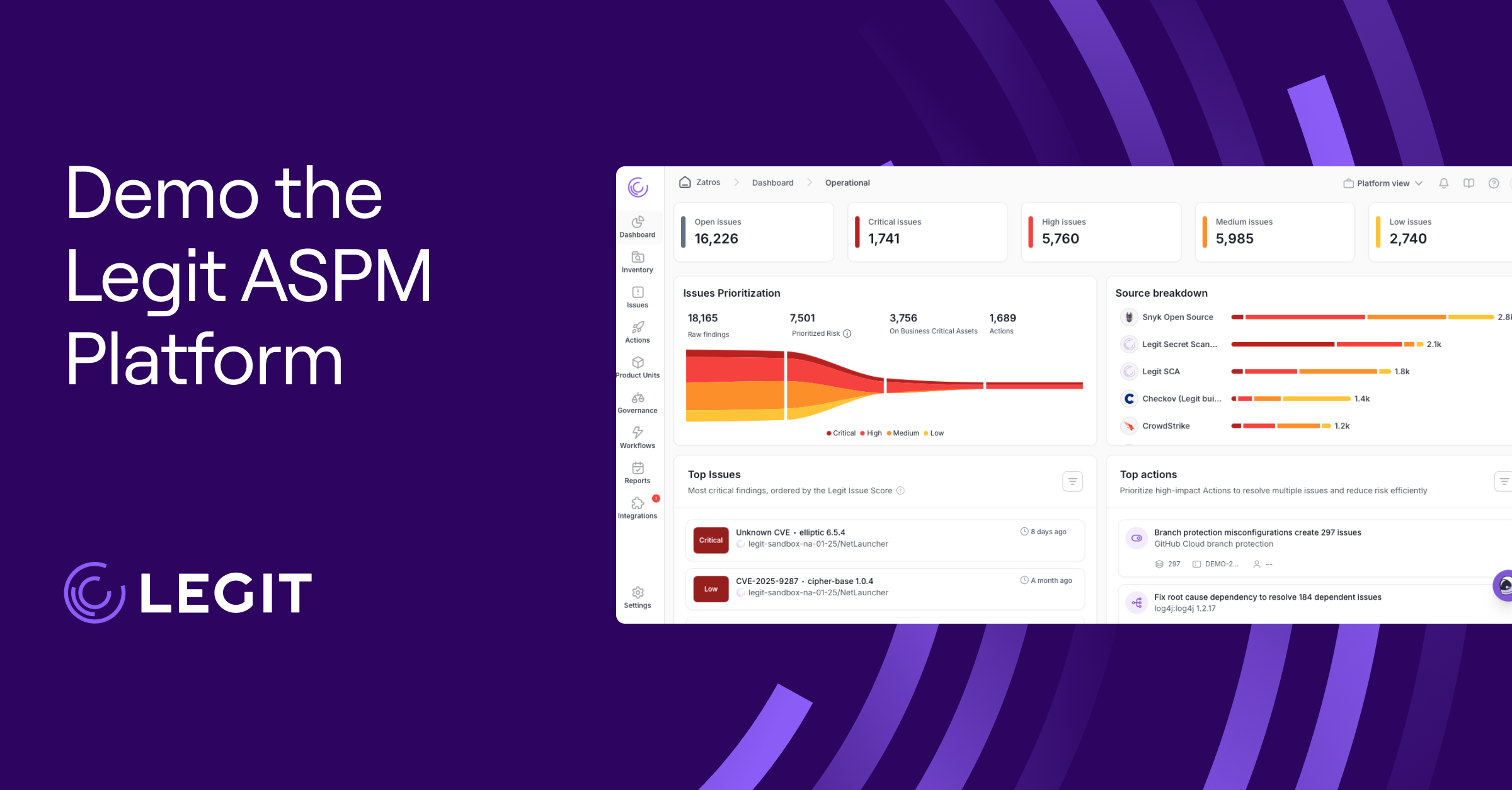The convenience and speed of cloud adoption have changed how companies build software. But reliance on cloud technologies has expanded the attack surface in ways many teams still struggle to control. From exposed storage buckets to misconfigurations, cloud environments introduce risks that traditional security tools can’t handle.
The key is to understand what’s at stake and how to protect it. Here’s a guide to the most common security issues in cloud computing, including practical strategies for securing your systems from code to cloud.
What Is Cloud Computing?
Cloud computing is a model for delivering computing services like storage, servers, databases, and networking over the Internet rather than through local infrastructure. Organizations can access a shared pool of configurable resources from cloud providers and scale their usage up or down as needed. This scalability makes cloud computing appealing to businesses with fluctuating workloads or growing digital operations.
According to the National Institute of Standards and Technology (NIST), cloud computing has five key characteristics: on-demand self-service, broad network access, resource pooling, rapid elasticity, and measured service. These features allow organizations to provision resources independently, share infrastructure securely, and only pay for what they use.
Cloud service providers (CSPs) such as Azure and Google Cloud offer these services with built-in security controls. Standard models include Software as a Service (SaaS), Platform as a Service (PaaS), and Infrastructure as a Service (IaaS), which offer varying levels of control and flexibility.
These models also shift how teams approach secure software development, especially as security responsibilities move beyond the perimeter and into the development process. Together, they form the foundation of how modern businesses build, deploy, and manage applications in the cloud.
Why Do Companies Need Cloud Computing?
For many companies, cloud computing offers a way to move faster, reduce costs, and stay competitive—without the burden of managing complex on-premises infrastructure. Instead of purchasing and maintaining expensive servers, businesses can pay for only what they use, scaling resources instantly to meet demand. This flexibility makes it easier to adapt to market shifts and handle traffic spikes.
Cloud platforms support remote and distributed workforces, giving employees secure access to systems and data from virtually anywhere. They also accelerate development teams' delivery timelines by integrating tools and automation across the software development lifecycle (SDLC).
These capabilities improve collaboration, boost operational efficiency, and accelerate time to market—advantages that become increasingly important as businesses grow and become more complex. But with these gains also come new responsibilities, which make it even more important to understand the risks in cloud computing that may accompany the benefits.
Data Security in Cloud Computing
Because cloud data moves across locations, teams, and perimeters, cloud computing security issues are complex. While cloud providers secure the underlying infrastructure using security controls like encryption and access logging, your organization has to control how it handles and configures its data.
This setup splits responsibility between the cloud provider and the customer, and the exact situation varies by service model (IaaS, PaaS, SaaS). But your role in securing what’s inside the cloud never disappears. Weak authentication, excessive permissions, and unpatched APIs can expose sensitive assets to cybercriminals looking to exploit vulnerabilities. That’s why cloud data security focuses on keeping your information private and accessible, aligning with the core principles of the CIA triad: confidentiality, integrity, and availability.
Security teams must implement security strategies like multi-factor authentication (MFA) and clear access controls to reduce risk. A Zero Trust approach is also a good way to verify every access request and avoid granting default trust to any user or device.
More importantly, companies need visibility across their environments, especially when they’re trying to align with compliance frameworks. Cloud security posture management (CSPM) tools help provide that visibility, alerting teams to drift, gaps in configuration, and risks as they emerge. Without that support, a single oversight—like a misconfigured storage bucket or an overly broad API key—can become a costly exposure.
Find out how we are helping enterprises like yours secure AI-generated code.

Main Cloud Security Risks: 6 Threats to Know
Teams face security challenges in cloud environments not because they lack tools, but because configuration gaps, limited visibility, and unclear responsibility complicate protection. Cybercriminals constantly evolve tactics to exploit these weaknesses in cloud applications and infrastructure.
Here are six of the most common security risks of cloud computing:
1. Misconfiguration
Misconfigurations are a consistent cause of cloud data breaches. Even a minor oversight can have consequences, like an exposed S3 bucket, lax access controls, or unchanged default settings.
The growing complexity of multi-cloud environments—especially when each provider offers different defaults—makes consistent configuration difficult. Many teams rely on CSPM tools to mitigate these issues early, but risks still slip through without proper implementation and oversight from the CSP.
2. Unauthorized Access
Cloud systems live outside traditional network perimeters, which makes them more accessible and exposed. Weak password hygiene, missing MFA, or compromised credentials can give attackers the keys to your environment.
Insider threats represent a significant challenge, as malicious employees or contractors may abuse their access. Additionally, phishing attacks targeting cloud credentials have become increasingly sophisticated, making effective access management policies essential for preventing unauthorized entry.
3. Limited Visibility
When workloads span across public clouds, containers, and APIs, it's easy to lose track of where assets live or who can access them. But traditional visibility tools often don’t work in cloud environments, especially with non-human identities like VMs or service accounts. This blind spot prevents teams from detecting threats early or responding effectively during incidents.
Modern solutions like cloud-native application protection platform (CNAPP) security close this gap by combining visibility, workload protection, and posture management into a single platform.
4. Insecure APIs and Interfaces
Public-facing APIs can allow attackers to exfiltrate sensitive data or manipulate infrastructure. Developers benefit from well-documented interfaces, but that documentation also gives attackers a blueprint for abuse.
5. Data Loss and Leakage
Teams build cloud environments for easy access and collaboration, but that convenience can unintentionally expose sensitive data. Users may share data through public links, store it without encryption, or leave it exposed due to weak policies.
6. Compliance Failures
Cloud deployments often cross geographic and regulatory boundaries, creating challenges in meeting data protection laws like the General Data Protection Regulation (GDPR) and Payment Card Industry Data Security Standard (PCI DSS). Organizations that fail to implement proper controls often lose track of where they store data, who accesses it, and how long they retain it.
8 Best Practices for Cloud Security Protection
Even the most secure cloud platforms need active oversight. These strategies can help reduce risk and strengthen protection across your environment, from infrastructure to identity to deployment pipelines:
- Triple-check your cloud configuration: Misconfigurations remain a top cause of cloud breaches. Validate IAM roles, network access, and automation logic across providers regularly.
- Encrypt data in transit and at rest: Use modern encryption protocols and centralized key management to protect data even when other security measures fail.
- Use least privilege and role-based access control: Limit access based on specific job roles. Routinely audit permissions and eliminate overprovisioned access.
- Enforce strong authentication with MFA: MFA is a straightforward and effective defense against compromised credentials and unauthorized access.
- Monitor your environment continuously: Enable logging and real-time monitoring to detect unusual behavior, data movement, or configuration drift across services.
- Run regular risk assessments and threat hunts: Don’t wait for an alert to investigate. Proactively test your cloud environment for known and emerging threats.
- Automate compliance and governance checks: Use tools that regularly validate controls against internal policies and external standards.
- Secure the CI/CD pipeline: Scan infrastructure-as-code templates, application dependencies, and secrets during development, not just in production.
Use Legit Security to Protect Your Cloud Computing
Legit Security helps you avoid cloud risks by embedding security directly into your SDLC. The platform offers visibility from code to cloud, identifying vulnerabilities, misconfigurations, and compliance gaps before they make it to production.
By securing your CI/CD pipelines, cloud-native applications, and software supply chain in real time, Legit empowers security and engineering teams to collaborate without slowing down releases. Keep your cloud environment protected, compliant, and ready to scale. Book a demo today.
Download our new whitepaper.

